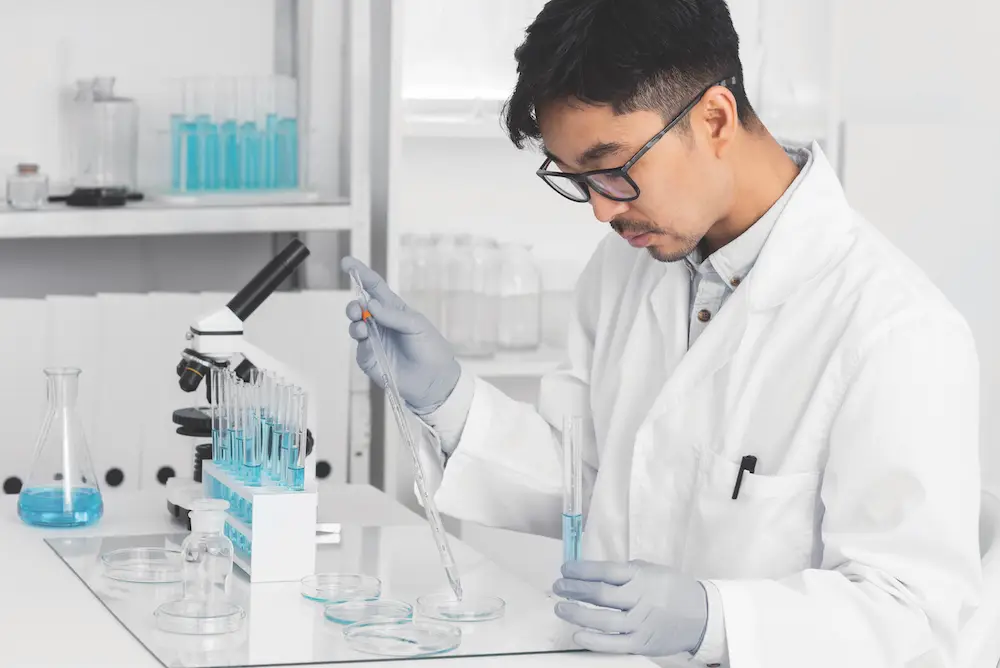Sarcoma: 5 Things to Know About This

Dr Richard Quek, Senior Consultant, Medical Oncology, explains 5 things you need to know about sarcoma, one of the rarest forms of cancer.
Sarcoma is a rare form of cancer that affects the bones, connective tissues of the body, and areas such as blood vessels, muscle, nerves and fat. It is a complex and diverse disease, with many distinct subtypes.
Sarcomas differ from other forms of cancers in their cell of origin. While most other forms of cancers develop from epidermal tissue (the outermost layer of skin on your body), sarcomas develop from mesodermal tissue (the musculoskeletal system, cardiovascular system, as well as connective tissues).
Here are 5 things you need to know about this rare cancer:
- Sarcoma makes up only 1% of adult cancer diagnoses
Sarcoma is one of the rarest forms of cancer. Rare subtypes of sarcomas have an incidence of ≤1 per 1,000,000 of the population1.
Currently, sarcoma makes up only 1% of adult cancer diagnoses and approximately 15% of childhood cancer diagnoses in the U.S.2. Out of these, there are about 12,000 cases of soft tissue sarcoma and 3,000 cases of bone sarcoma diagnosed each year3.
- There are over 70 subtypes of sarcoma
Sarcoma is a diverse and heterogeneous disease, comprising more than 70 distinct subtypes. They can be broadly divided into 2 main categories: soft tissue sarcoma and bone sarcoma.
Soft tissue sarcoma affects the soft tissues of the body. They can be further classified into the specific tissue or area it affects. Common soft tissue sarcoma subtypes include:
-
-
- Leiomyosarcoma – sarcoma that arises from the smooth muscles of the uterus or veins
- Liposarcoma – sarcoma that arises from fat tissue, typically in the trunk and limbs
- Angiosarcoma – sarcoma that arises from the blood vessels
-
Bone sarcoma starts in the bone, and usually occurs in the thigh, upper arm or shin. Common bone sarcoma subtypes include:
-
-
- Osteosarcoma – sarcoma that arises from long bones
- Ewing sarcoma – sarcoma that affects the bone or soft tissue
- Chondrosarcoma – sarcoma that affects the cartilage
-
Gastrointestinal stromal tumour (GIST) is one of the most common forms of sarcoma that arises from the gastrointestinal tract. It is characterised by a mutation in the KIT or PDGFRA genes.
- Most sarcoma subtypes do not have a known cause
An individual’s risk of developing cancer depends on many things, including age, genetics, lifestyle and environmental factors.
Most sarcoma subtypes do not have a known cause. However, there are several risk factors that can increase an individual’s risk of developing the disease.
Common risk factors for sarcoma include:
-
-
- Chemical exposure – exposure to cancer-causing chemicals and other hazardous substances such as vinyl chloride monomer, dioxin or arsenic
- Virus exposure – exposure to certain viruses such as Human Herpesvirus 8 (HHV8), also called Kaposi Sarcoma Herpesvirus (KSHV), may lead to the development of a subtype of sarcoma known as Kaposi’s sarcoma in individuals with low immunity
- Radiation exposure – exposure to radiation, usually after radiation treatment for other cancers, may increase an individual’s risk of radiation-related sarcoma
- Genetic disorders – genetically inherited diseases such as Li-Fraumeni syndrome, neurofibromatos is type 1, and familial adenomatous polyposis, may increase an individual’s risk of sarcoma
- Long-term swelling – lymphedema, persistent swelling, or a blocked or diseased lymphatic system, can increase an individual’s risk of developing a subtype of sarcoma called lymphangiosarcoma
-
- Signs and symptoms of sarcoma varies by subtype
The signs and symptoms of sarcoma usually depend on its subtype and site of occurrence:
Soft tissue sarcoma
-
-
- Painless lumps and bumps
- Persistent abdominal pain
- Black stool
- Blood in stool or vomit
- Skin lesions
- Persistent swelling
-
Bone sarcoma
-
-
- Persistent pain in the bones, especially at night
- Bone swelling
- Bone fractures from minimal trauma or no apparent cause
- Lump with pain and swelling in later stages
- Restricted mobility
- Sensation of numbness, tingling or weakness (in the case of spine cancer)
-
- Sarcoma is complex and difficult to treat.
As sarcoma is rare and heterogeneous, it makes it extremely challenging to treat
Generally, treatment will take into account the specific sarcoma subtype, the characteristics of the tumour (i.e. location, grade and size), and the patient’s age and general health. Your doctor may suggest specific treatment options such as:
-
- Surgery – where the tumour is removed along with surrounding healthy tis sue. Certain subtypes of sarcoma such as chondrosarcoma are best treated with surgery alone
- Radiation therapy – where high-energy rays or particles are used to kill cancer cells
- Chemotherapy – a procedure which interferes with the ability of cancer cells to grow and divide. Sarcomas which are sensitive to chemotherapy include Ewing sarcoma and rhabdomyosarcoma
- Targeted therapy – where drugs or artificial antibodies block sarcoma cell growth
If you or anyone in your family is experiencing any signs and symptoms of sarcoma, talk to a doctor. Seeking treatment early is crucial in fighting this rare disease.
| POSTED IN | Cancer Treatments |
| TAGS | chemotherapy, radiotherapy (radiation therapy), surgery, targeted therapy |
| READ MORE ABOUT | Sarcoma |
| PUBLISHED 01 AUGUST 2023 |
